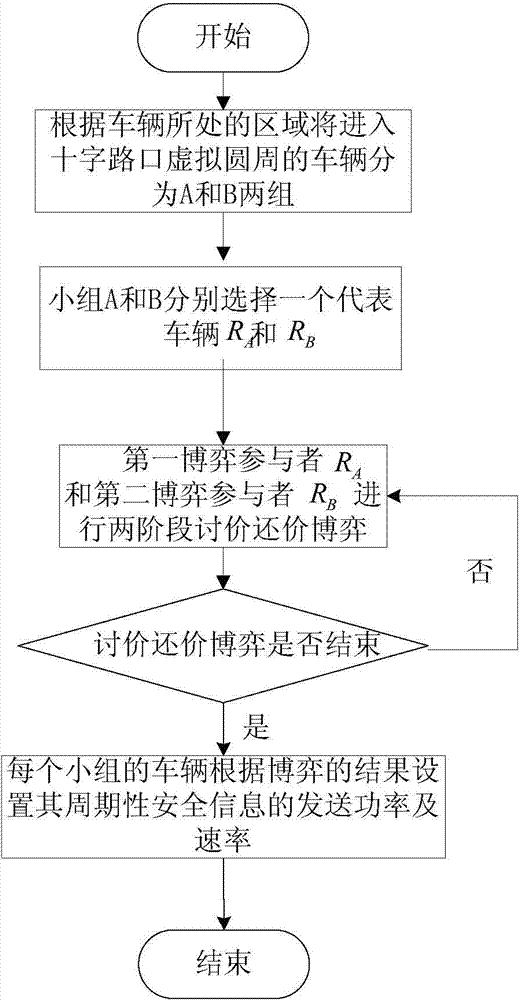Method for controlling vehicle self-organizing network congestion based on joint power and speed regulation
A self-organizing network and rate adjustment technology, applied in the field of communication, can solve problems such as full utilization of unfavorable channel bandwidth, reduce channel load, channel congestion, etc., so as to overcome the decline of channel bandwidth utilization rate, improve the probability of successful reception, and ensure driving safety. Effect
- Summary
- Abstract
- Description
- Claims
- Application Information
AI Technical Summary
Problems solved by technology
Method used
Image
Examples
Example Embodiment
[0025] The technical solutions of the present invention will be described in detail below with reference to the accompanying drawings.
[0026] refer to figure 1 , the implementation steps of the vehicle self-organizing network congestion control method based on joint power and rate adjustment of the present invention are as follows:
[0027] Step 1, channel detection.
[0028] Each vehicle continuously detects the local channel load L at the detection interval T, where the local channel load L refers to the channel load within the monitoring range of the node. In the present invention, the average channel busy time is used to measure the local channel load L, and its calculation formula as follows:
[0029] L = C · p n · ρ · r · τ ,
[0030] Among them, C is a constant, in the intersection scenario, C is 10, p is the tr...
PUM
 Login to view more
Login to view more Abstract
Description
Claims
Application Information
 Login to view more
Login to view more - R&D Engineer
- R&D Manager
- IP Professional
- Industry Leading Data Capabilities
- Powerful AI technology
- Patent DNA Extraction
Browse by: Latest US Patents, China's latest patents, Technical Efficacy Thesaurus, Application Domain, Technology Topic.
© 2024 PatSnap. All rights reserved.Legal|Privacy policy|Modern Slavery Act Transparency Statement|Sitemap



